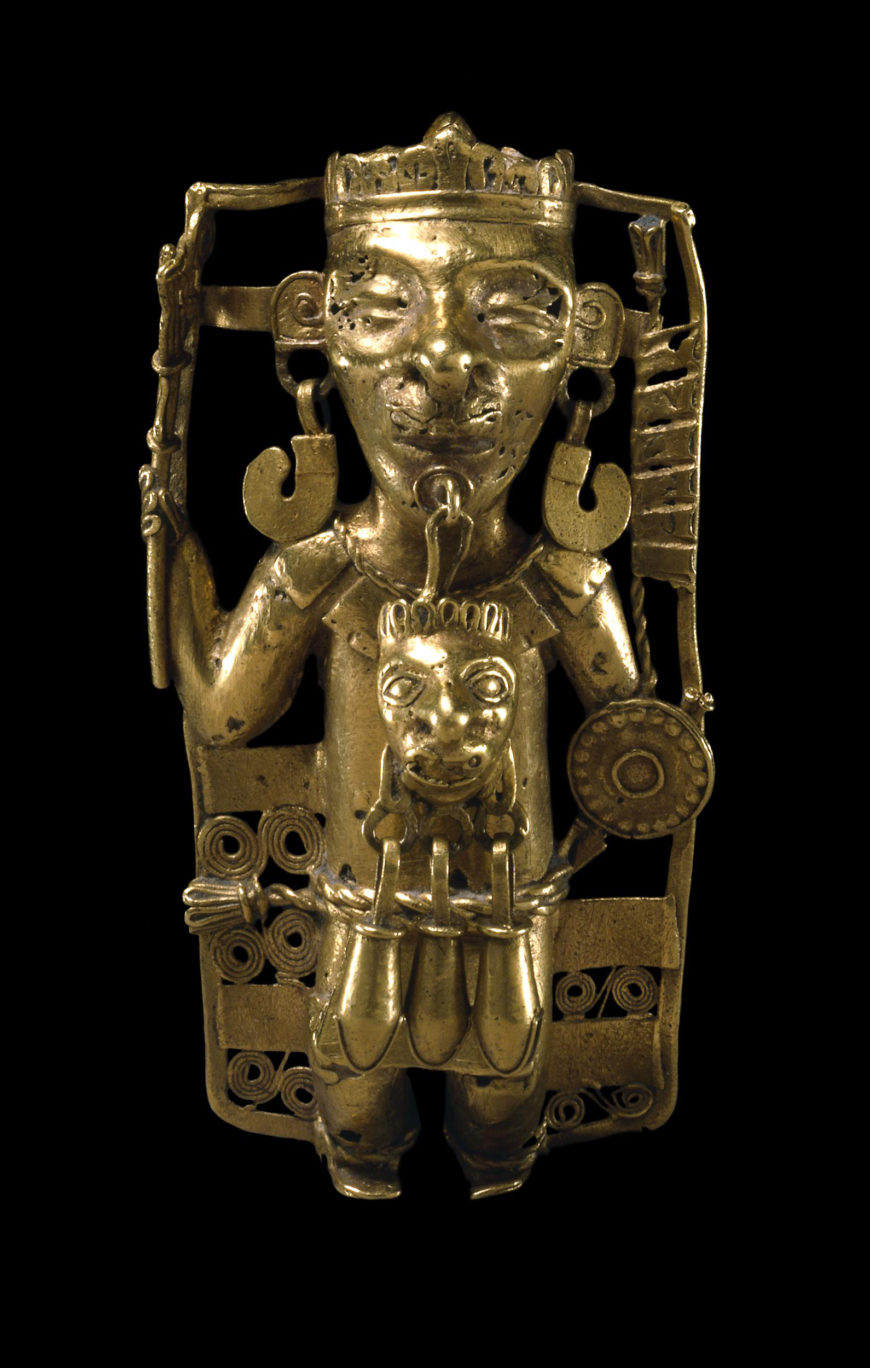
Claims to hereditary nobility were based on racing ancestral lineage and proclaiming military prowess through dress and ornament. Gold pendant depicting a ruler, Mixtec, lost wax-casting, gold, 9 x 4.6 cm, from Tehuantepec, Mexico (© Trustees of the British Museum)
This pendant represents a nobleman wearing a necklace, earrings and a lip plug from which hangs a mask with three suspended bells. He carries a staff in his right hand and a shield in the left.The pendant was found, together with three other gold objects, in Tehuantepec while carrying out building works at a private house in the 1870s.
This object and one with a head from which hang four chains, with three links and a bell each were acquired by the British Museum in the 1880s. The other two went to the Museum für Völkerkunde, in Berlin.
Also in Oaxaca, at Monte Albán, 121 gold objects were found in a rich tomb. Pendants similar to this one, rings, ear, and lip plugs, discs, and other types of jewelry, were placed as burial offerings together with highly prized objects made of shell, obsidian, jade, crystal rock, tecali (a translucent stone), and other precious materials.
A sixteenth-century Spanish friar, Bernardino de Sahagún, described the techniques employed by indigenous metalsmiths, including the lost-wax method, used to cast this pendant. The skills exhibited by these talented artisans were greatly admired by the Spaniards and other Renaissance Europeans.
© Trustees of the British Museum

